Last-Minute NYC Holiday Gift Guide 🎁
We’ve created a holiday gift guide with presents for the intrepid New Yorker that should arrive just in time—


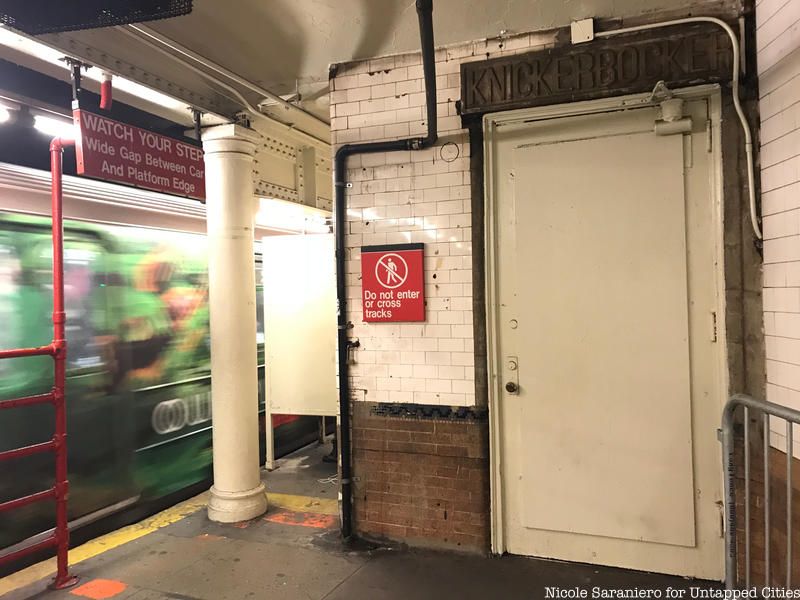
Throughout the New York City subway system there are remnants of abandoned stations, tracks no longer in use and corridors that have been boarded up. All of these pieces of the past tell us something about the system’s history and evolution. One of the places where the subway’s growth and change is most evident is the Times Square/42nd Street station.
One of the busiest stations in the system today, the Times Square station was one of the first twenty-eight stations to open along New York City’s first subway line, the Interborough Rapid Transit, in 1904. Among the colorful new artwork, loud buskers and hurried commuters that flood the station today, you can still find remnants of the original station which was designed by Heins and LaFarge. Check out four remnants of the original station that can be found in the current station today and join our upcoming underground tour to uncover the secrets of the system while exploring the stations and lines of Lower Manhattan, starting at the birthplace of the system in City Hall Park.
Underground Tour of the NYC Subway
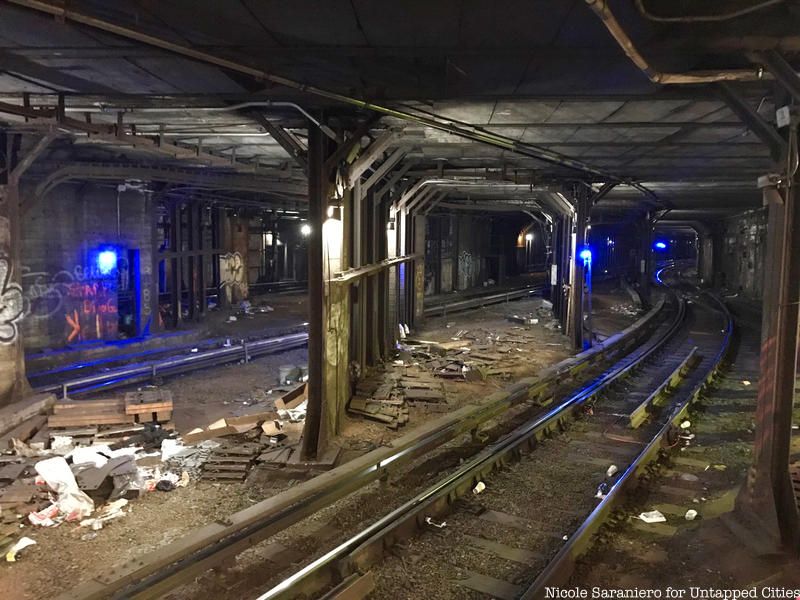
Riders taking the shuttle from Times Square to Grand Central Terminal may be perplexed to notice that the tracks are numbered 1, 3 and 4. There is no Track 2. This is because what would have been Track 2 was covered over to make a platform for Track 3. When the station was originally built, there were two local and two express tracks. Track 2 was a downtown express track on which trains would bypass Times Square station. Track 3 was the former northbound track, while Tracks 1 and 4 were local tracks.
These tracks offered a continuous ride north from the very first station at City Hall Station to the terminus at 145th Street and back again until 1918. At that time, Track 3 was converted from an express track to an additional local shuttle track between Times Square and Grand Central Terminal. Track 2 was covered over, originally by a wooden platform which was replaced by a concrete one decades later, so riders could access the newly local Track 3.
You can still see the path that the original four tracks would have taken if you walk to the end of the platform. There are four distinct arches that run almost perpendicular to current tracks, and show the curved paths the original lines once traveled. While two of the three shuttle tracks terminate here, you can actually see that Track 4 continues on and connects to the northbound track of the 1 train. The track is currently spanned by a pedestrian bridge and trains do not usually continue through that way.

From the dawn of the subway system, direct access to was a major perk. Cultural buildings like Clinton Hall, iconic buildings like the Woolworth Building, and department stores like Wanamakers and Loeser’s could boast direct access to stations like Astor Place. When places like these closed or were torn down, doorways and corridors were left untravelled and eventually blocked off. An example of this can also be found inside the Times Square subway station which was once connected to the Knickerbocker Hotel. Again near the shuttle to Grand Central Terminal, at the end of Track 1, you can see a door that once led to the lowest level of the famed hotel’s restaurants and bars. Another similar sign, though losing much of its original splendor, is located at one of the exits close to the Knickerbocker.

The Knickerbocker Hotel opened in 1906 on land owned by John Jacob Astor IV. From the beginning, the lavish hotel was a popular destination, thanks especially to its location in the booming area of Times Square and its subway level entrance which clearly advertised it to downtown IRT riders. The corridor leading from the subway into the hotel, was also decorated with heraldic banners and settees, according to a description from the New York Times in 1906. Inside the tunnel today, which is closed off and used for storage, there are some architectural remnants of the former splendor found in the decaying decorative plasterwork and stenciling on the columns. The original hotel closed in 1920 and for years the Knickerbocker was used as office space. It was reopened as a hotel in 2015 but unfortunately the tunnel did not reopen with it.
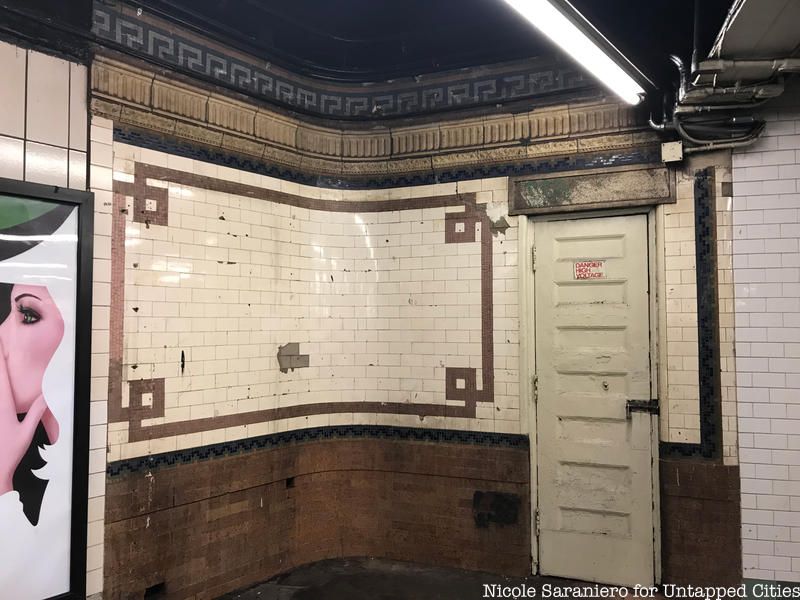
When tasked with designing the original twenty-eight subway stations of the IRT, architects Heins and LaFarge had little to work with in terms of the architectural structure of the stations. Unlike train stations, the subway stations were below ground and therefore not stand alone structures. The designing duo basically had to take an enclosed industrial setting with narrow platforms and make it pleasant for subway riders. Most of the architectural work they did inside the stations was ornamental.
In the Times Square subway station, you can see bits and pieces of Heins and LaFarge’s decorative detailing in the form of mosaic tiles, terra cotta cornices, and walls covered in a combination of white tiles and iron-spot brick. Throughout the original twenty-eight stations there are great examples of original mosaic work that still exist. When possible, Heins and LaFarge drew on the history of the subway station’s location to inspire the design. For example, there is a Dutch house in the Wall Street station which represents New York City’s early colonial foundations, and the massive, terra cotta murals inside the Fulton Street Station pay homage to Robert Fulton, the man who developed the first commercially successful steamboat.
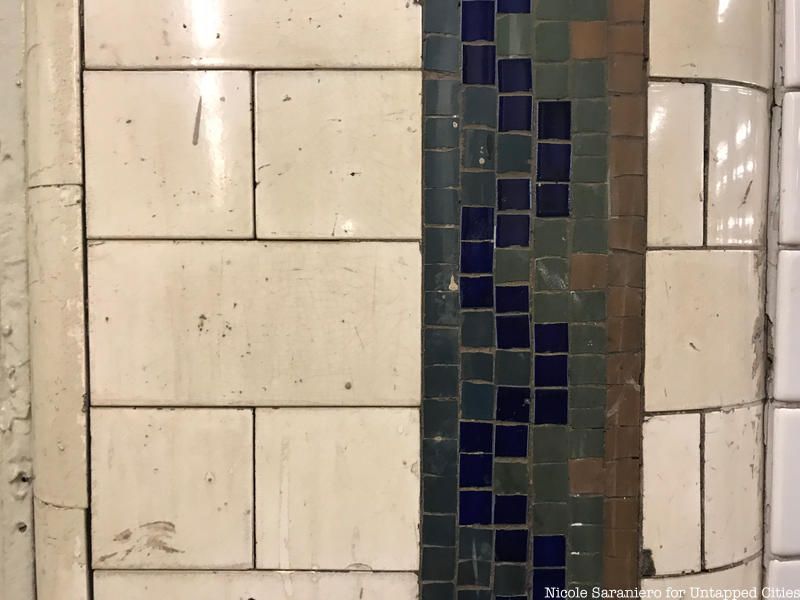
In the Times Square Station, you can notice that the round columns which line tracks 1 and 4 are different than the square steel beams you see on the rest of the platforms. That is because those rounded columns were part of the original rider platforms. In the image below, you can also see some decorative relief-work on the ceiling.
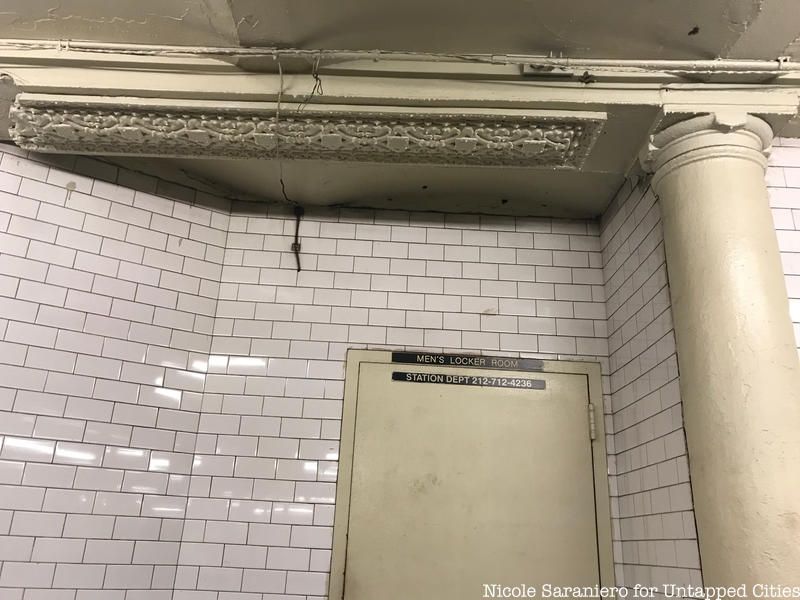
Spread across small sections of the shuttle Tracks 1 and 4 you can see red iron fences with small globes atop the posts. These fences are likely originals from the 1904 station.
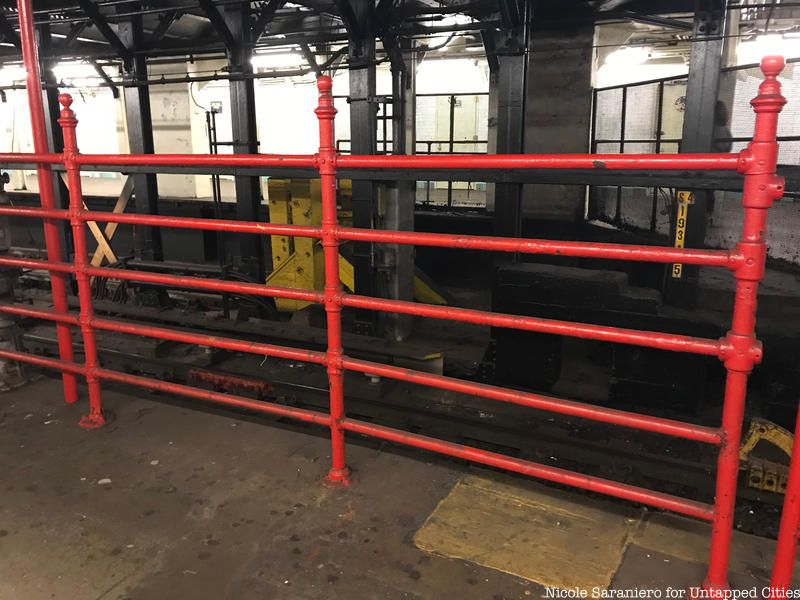
Since subway stations were underground, the structures Heins and LaFarge designed for the system were aboveground cast iron, wire and glass kiosks and brick and stone shelters control houses. Only three of Heins and LaFarge’s original control houses still exist and can be found at Atlantic Avenue (next to the Williamsburgh Savings Bank), Bowling Green and 72nd Street.
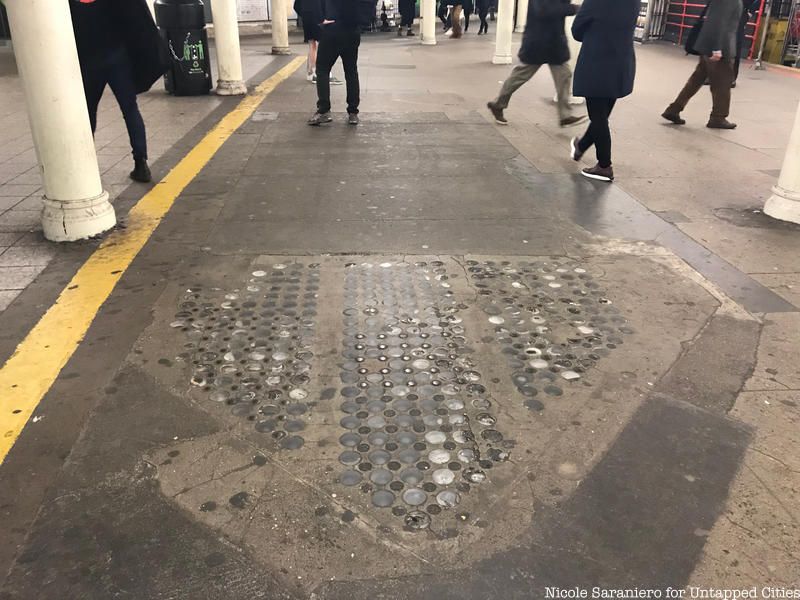
For a time when the subway was new, before tokens and Metrocards, actual paper tickets were used to gain access to the subway. This caused major delays and headaches, as tickets easily flew away with a gust of wind and collection was time consuming. Inside the Times Square Subway station, again near the tracks of the Grand Central Shuttle, there is the outline of what may have been the ticket kiosk. Nearby, you can also see bolts in the ground that likely indicate where turnstiles once stood.
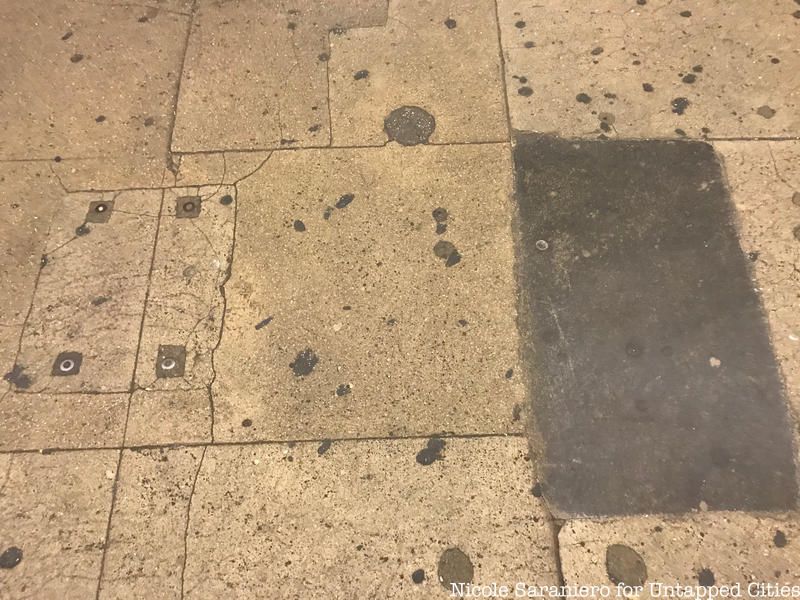
Want to learn more about the history of the New York City subway? Join our upcoming underground tour to uncover the secrets of the system while exploring the stations and lines of Lower Manhattan, starting at the birthplace of the system in City Hall Park.
Underground Tour of the NYC Subway
Next, check out The Top 20 Secrets of the NYC Subway and Remnants of Original Fulton Street Subway Station Hidden in Plain Sight
Subscribe to our newsletter